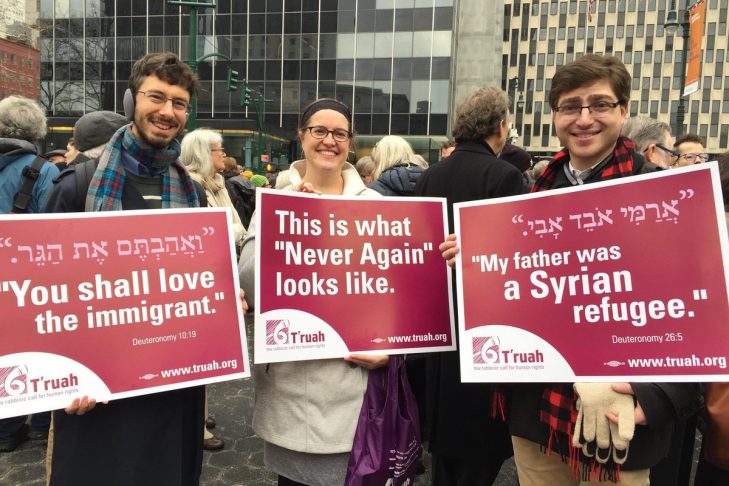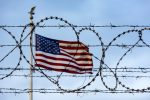Last week, Rep. Alexandria Ocasio-Cortez of New York was at the center of a firestorm when she referred to U.S. Customs and Border Protection detention centers as “concentration camps.” In an Instagram Live video, the freshman Democrat asserted: “The U.S. is running concentration camps on our southern border, and this is exactly what they are. … I want to talk to the people that are concerned enough with humanity to say ‘never again.’”
Ocasio-Cortez instantly drew both support and ire for her comment. I wondered whether this kerfuffle was a question of semantics or an analogy gone awry. After all, concentration camps call up images of the Nazi genocide, and genocide is not what is happening on the border. On the other hand, as Andrea Pitzer, author of “One Long Night: A Global History of Concentration Camps,” recently told Esquire, “Things can be concentration camps without being Dachau or Auschwitz.”
Concentration camps did not start out as brutal slave labor camps or extermination camps. Rabbi Danya Ruttenberg sagely and calmly wrote in The Washington Post recently that, “We already know that the path to atrocity can be a process, and that the Holocaust began with dehumanizing propaganda, with discriminatory laws with roundups and deportations, and with internment. Those things are happening in our country now, and they’re known as some of the stages of genocide first articulated by Genocide Watch in 1996.”
When I watch the news clips or listen to radio interviews from the border, I shake as I hear my mother’s Spanish, now my Spanish, being spoken. Ocasio-Cortez and I share the touching intimacy of a common language. Spanish was the language of our childhood, the language of our grandparents. It was the language that distinguished me as a Latina Jew. Though it wasn’t always easy, I’m proud that I was a bilingual baby.
My cousin was 6 months old when she fled Cuba with her parents. I can only imagine the horror if she had been separated from my aunt and uncle. These children who are captured on the border are herded into cages where, terribly frightened and very hungry, they are vulnerable to crimes and misdemeanors by officials in charge. They are prisoners of a war about which no one is talking. I read that a border guard sexually assaulted a 4-year-old girl.
My Cuban relatives were never here illegally, and neither are the migrants in this administration’s concentration camps masquerading as euphemistic detention centers. It’s important to point out that anyone declaring asylum at the border of the United States has a right to a hearing and to due process.
Sometimes Holocaust vocabulary contains the only words that can describe the human rights tragedy happening at our southern border. We’re on the cusp of something revolutionary in terms of our thinking about the memory of the Holocaust. Using some of its vocabulary cautiously is wholly appropriate in extreme situations, like the one we face today. For example, visit T’ruah: The Rabbinic Call for Human Rights online and find a picture of a woman holding a sign that says: “This is what ‘Never Again’ looks like.” How does that dishonor the memory of the Holocaust? Those words are an improvised Kaddish—a prayer of mourning—for the 6 million. The words are also a prayer of optimism. When “Never Again” is evoked it shows that the victims of the Holocaust did not die in vain.
This past year I have spent time in a church basement, and what I do there is called companionship. That is, I watch over a family who is on the run from U.S. Immigration and Customs Enforcement—ICE. The people I’ve grown to care about are always a hair’s breadth away from being deported back to the poverty and violence that plague their Central American country.
There is a script for me to follow if ICE comes to arrest this family, my family. I will ask to see a warrant. If they have one, I will let them in, but not before I’ve allowed enough time for the woman and her family to hide behind the broad lectern on the altar of the church. The altar is the most sacred space in the building. To arrest innocent people there would taint the holiness of the place. I will tape the incident with my iPhone and say, “This is the last opportunity you have to check your conscience before you take these innocent people away.” I will then go off-script and ask the ICE agent a final question before these people are handcuffed: “Are you sure you want to take this beautiful mother away from her American-born children?” I will ask again and again until she and her children are out of sight.
One afternoon, the church basement flooded. The mother and I mopped the floor of her living area together in companionable silence until she sadly riffed: “The people here are nice, but I wish they spoke Spanish like you. I don’t know why it doesn’t matter that my children are American. Hace meses que no veo el sol. I haven’t seen the sun in months.”
Good Germans asked themselves in the 1930s what they could do to help their fellow Jewish citizens. (Yes, another imperfect analogy.) We can donate today to organizations like HIAS and T’ruah. When federations like Combined Jewish Philanthropies sponsor trips to border cities like McAllen and San Diego, we can make every effort to go. We can lobby our representatives in Washington, D.C., to stop this madness. We can vote. And we can we sit in church basements in close, loving silence until this nightmare is over.
For more information on how to help migrants in detention, learn about the Project Corazon Travel Fund to send immigration lawyers to the border.









